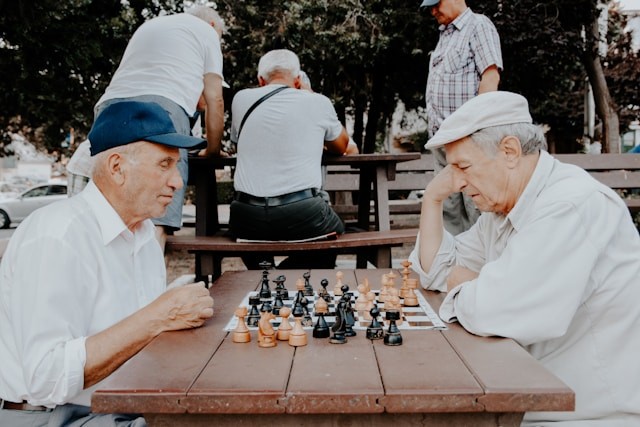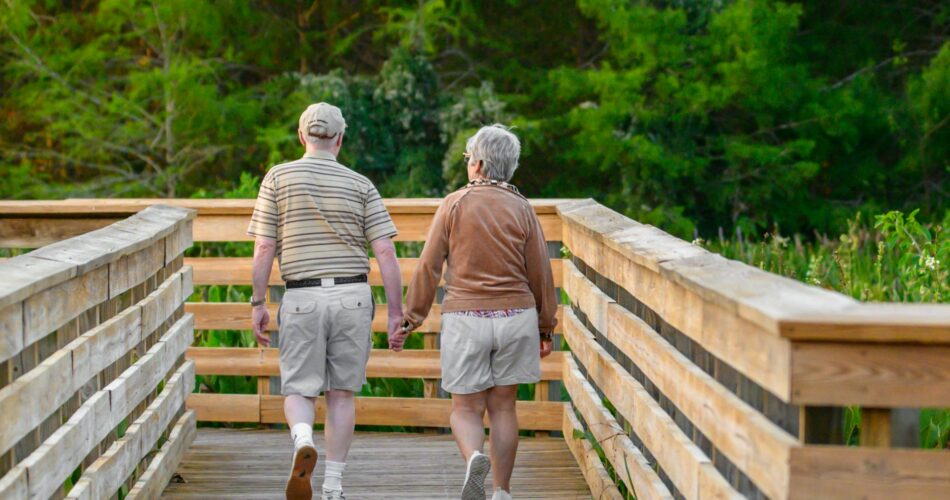Key Takeaways:
- Senior living communities offer diverse amenities suitable for an active and vibrant lifestyle.
- Social engagement within these communities is critical in enhancing residents’ quality of life.
- Convenience is crucial, with multiple in-house services streamlining everyday life for seniors.
- Health and wellness programs in senior living communities contribute to comprehensive well-being.
- Nutritional and interactive dining experiences are significant aspects of senior living communities.
- Personal testimonials provide relatable insights into the real-life experiences within these communities.
Table of Contents
- Introduction to Senior Living Options
- The Active Lifestyle in Senior Living Communities
- Social Connectivity and Community Living
- The Convenience Factor: Simplifying Life for Seniors
- Health and Wellness Programs
- Lifelong Learning and Engagement Opportunities
- The Safety and Security of Senior Living Communities
- Balanced Nutrition and Dining Experiences
- Choosing the Right Community for You
- Testimonials and Real-Life Experiences
Introduction to Senior Living Options
In today’s diverse society, seniors seek living arrangements that resonate with their lifestyle and health needs. Baldwin Park senior living communities have evolved from the traditional nursing home model to create dynamic environments that foster independence, wellness, and community engagement. These communities range from villas and apartments geared toward the fairly independent to assisted living facilities that provide more comprehensive care services. With an aging population that values freedom and activity, such communities are in high demand, offering customized options that balance support with autonomy.
Although each community boasts unique features, the overarching goal remains clear – to offer a fulfilling lifestyle that promotes health, safety, and happiness among its residents. This concept responds to the changing demographics and reflects many seniors’ active approach toward retirement. Such settings are designed to adapt to the evolving needs of residents, ensuring they have access to a lifestyle that remains enriching and emotionally resonant.

Photo by Vlad Sargu on Unsplash
The Active Lifestyle in Senior Living Communities
Emphasizing the importance of mobility and fitness, senior living communities offer many recreational amenities such as swimming pools, tennis courts, and modern gyms equipped with senior-friendly equipment. These facilities are designed to keep residents physically active, crucial for maintaining strength, flexibility, and overall health. Fitness instructors often tailor exercise programs to cater to individual needs, whether it means low-impact aerobics for those with joint concerns or structured strength training to help maintain muscle mass and bone density.
Beyond the physical, such environments also provide spaces for intellectual and creative activities. Libraries, art studios, and craft rooms are standard fixtures, all contributing to a stimulating environment that recognizes the importance of a robust and active mind. This holistic approach to mental and physical activity sets these communities apart and makes them an ideal choice for seniors seeking a vibrant post-retirement life.
Social Connectivity and Community Living
Long-standing research attests to the link between active social lives and better health outcomes in older people. To cultivate this, senior living facilities prioritize community spirit, organizing frequent events, hobby clubs, and interest groups that encourage interaction and camaraderie among the residents. The structured nature of these programs ensures that individuals never find themselves isolated and always have opportunities to build new friendships. Activities like communal gardening, book discussions, and cultural outings gently motivate residents to leave their private spaces and share experiences with their peers. This focus on social connectivity not only entertains but also imparts a sense of belonging and purpose, which can significantly uplift spirits and contribute to emotional wellness. For a deeper understanding of this dynamic, Health Affairs offers a compelling discussion on the significance of social interactions about senior health.
The Convenience Factor: Simplifying Life for Seniors
Convenience in a senior living setting translates to more than just comfort; it signifies freedom from daily chores and home maintenance responsibilities that can become burdensome with age. By providing readily available services like on-site maintenance, housekeeping, and transportation, these communities effectively lift the weight of domestic duties, enabling residents to employ their time as they see fit.
The idea is to streamline the day-to-day aspects of living so that seniors can focus on the activities and pursuits that they enjoy. It could mean spending more time with loved ones, delving into a hobby, or simply relaxing—this simplicity and effortlessness truly enrich their golden years.
Health and Wellness Programs
A cornerstone of senior living is the broad range of wellness programs tailored to elder care. From on-site medical check-ups to wellness seminars that address common health concerns in aging, communities are dedicated to proactively preserving health. Some even deliver personalized health plans, including nutritional counseling, massage therapy, and mental health support services. The scope of these programs extends well beyond mere physical health; they encompass a wide gamut of pursuits aimed at maintaining cognitive agility and emotional health. Whether through meditation classes that guide seniors in mindfulness practices or group discussions that provide mental stimulation, the objective is to anchor residents deeply in all aspects of personal wellness.
Lifelong Learning and Engagement Opportunities
Retirement should be a gateway to new experiences and knowledge; senior living communities take this belief to heart. These communities often partner with local educational institutions to offer continued education classes ranging from computer skills to foreign languages. Creative writing workshops, music classes, and guest lectures on various topics keep the residents engaged and curious, celebrating the philosophy that education is a lifelong journey. Fostering an environment where learning remains a joy and a choice can contribute immensely to residents’ self-esteem and contentment. It’s about maintaining a sense of agency and growth that can sometimes feel lost in the later chapters of life.
The Safety and Security of Senior Living Communities
Security measures within senior living communities are robust and comprehensive, ensuring residents feel safe in their homes. Access controls, CCTV surveillance, and on-call security teams provide tangible peace of mind. In addition to these physical security systems, emergency response systems within living quarters mean that help is just a button press away in the event of an accident or medical emergency. This security is not limited to incident prevention but also encompasses thorough planning and response strategies for various scenarios. Drills and training exercises are conducted regularly to ensure staff and residents are prepared, creating an environment where safety is continuously upheld.

Photo by Wedding Dreamz on Unsplash
Balanced Nutrition and Dining Experiences
Healthy eating is vital for seniors, and senior living communities cater to this need with specialized dietary plans, high-quality ingredients, and various meal options. Trained chefs work with nutritionists to craft delicious and beneficial menus, considering individual dietary restrictions and preferences. Meals are often events, with beautifully set dining halls encouraging residents to savor their food and socialize. This combination of nutritional attention and joyous interaction makes dining a daily highlight and reinforces the community-centered ethos of these living arrangements.
Choosing the Right Community for You
Moving to a senior living community is a decision that should be approached with care and consideration. Each community has its personality, services, and amenities, making it essential for individuals and their families to understand their options fully. Factors such as proximity to family, types of activities offered, and the degree of medical care available should all be considered when making this life-changing choice.
It’s advisable to visit several communities, participate in their activities, and have meals there to get a feel for the atmosphere and ethos. Prospective residents should also speak to current residents to get firsthand accounts of their experiences. The decision ultimately comes down to where one feels most at home and supported, allowing for a dignified and joyful retirement.
Testimonials and Real-Life Experiences
The stories and experiences residents share can provide invaluable insight for those considering a move to a senior living community. These testimonials often describe new friendships formed, rediscovered lost hobbies, and a reinvigorated zest for life. They color the senior living narrative with genuine experiences, revealing its profound impact on individual lives. Some speak of their enhanced sense of security from the comprehensive safety infrastructure and available medical care. Others highlight the freedom they’ve gained from shedding the burdens of homeownership and maintenance. These personal accounts test the potential for happiness and fulfillment within the right community.
Enormous resources explore current trends in active aging that impact the experience of community living to delve deeper into how senior living communities are customizing environments to meet the needs and preferences of today’s seniors.
